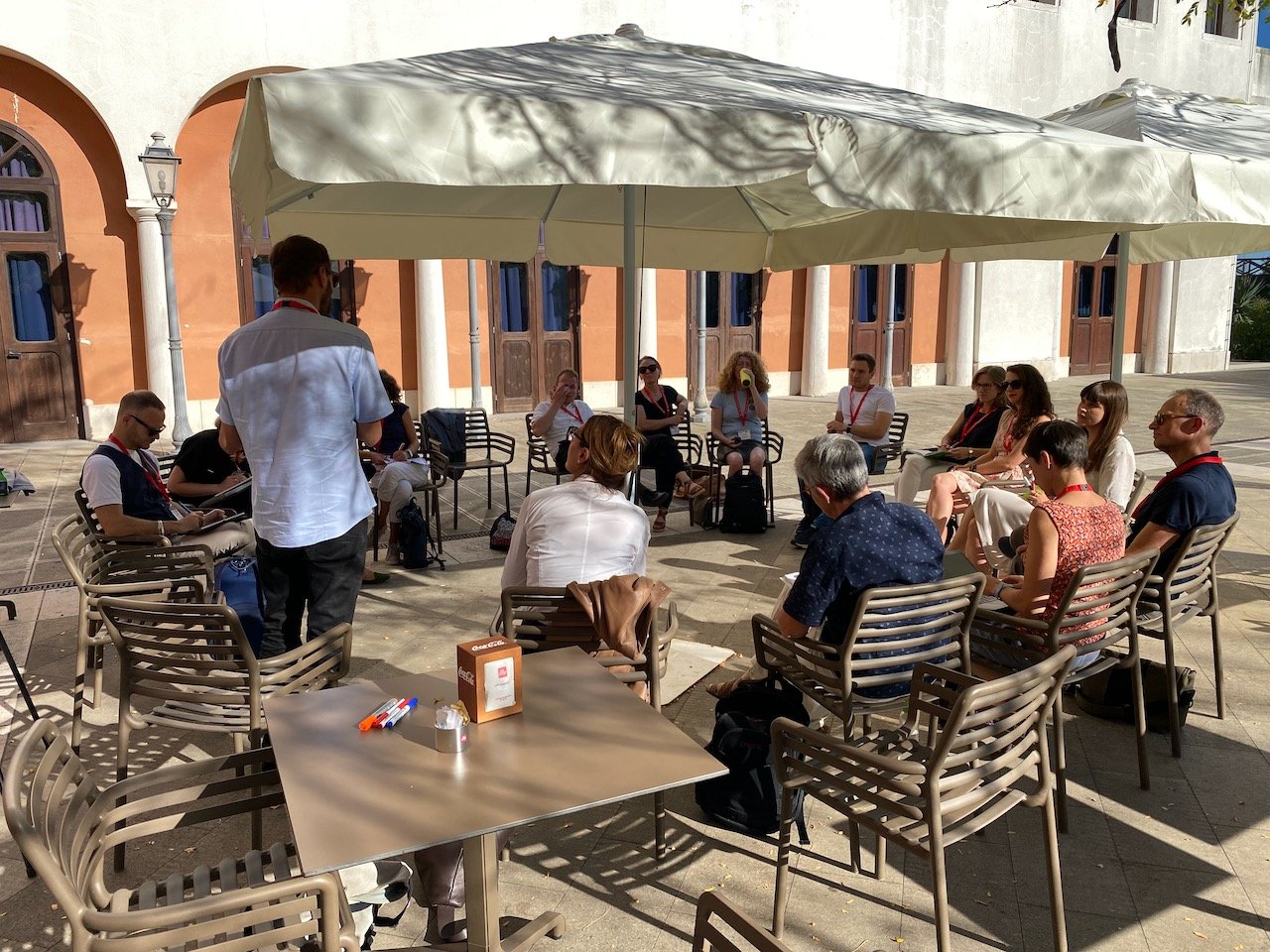Why small business owners should do the conference thing
As an independent consultant, I go to conferences on my own dime. These events don’t come cheap, especially when they’re international. Flights, hotels, new shirts to look the part, and the conference itself - the costs add up. On top of that, it’s daunting stepping into a situation full of professionals and high-ranking academics, knowing I’ll be there for a few days of non-stop conversations.
My introverted tendencies beg me to stay home, save the money, and spare myself the gnawing concern about the appropriateness of my conference attire.
My recent experience at the PCST Venice Symposium, held at the beautiful Venice International University, reminded me why it’s important to push past any doubts, get out there, and do the conference thing.
Making connections and building community
A conference offers an incomparable opportunity to connect with like-minded professionals. This is especially true for smaller events. Coffee breaks, lunch, and the in-between moments (like 5-minute walks between venues) are great for chatting, sharing ideas, and learning about the people doing incredible work in the field.
At the PCST Symposium, I met loads of influential science communicators from around the world. I learned a lot and made new friendships and professional connections.
A working group session I was involved in focused on support researchers with their public communication. Brendon Bosworth.
Face-to-face conversations go deeper
Something I have found challenging about running Human Element Communications over the years is the feeling of being alone as an independent in the often nebulous world of science communication.
At the symposium, I connected with a science communicator whose work I have been following for some time, Tullio Rossi, the director of Animate Your Science (if you’re looking for slick animations for your science papers - check them out!). Tullio is an example of what happens when you combine excellent science communication skills with business savvy.
We had a long discussion about the journey of building a science communication business. Tullio’s experience inspired me to aim higher with my own work. I know that the quality of the conversation we had in-person would not be possible to replicate online.
Understanding the value of facilitation
As a communications specialist, the way we relate to one another is of great interest to me. I am particularly concerned with the processes that enable groups of people to collaborate effectively.
Conferences are living laboratories for understanding more about this aspect of human experience. At the symposium, I observed how important facilitation is for bringing people together and getting them invested in a shared task.
I was part of a working group focused on how to support researchers with their public communication. We were tasked with developing recommendations on this. After 3 hours of presentations, the working group was asked to co-develop the recommendations. Trying to do this in a group of at least 40 people, working on a shared document, wasn’t going to work. The energy was flat. Ideas weren’t flowing.
So, the working group self-organised into smaller groups, each focused on a discrete element of the main topic. My group chose to work outside. Tobias Maier, who runs science communication programmes in Germany, led us through a fun icebreaker on the grass, which loosened everyone up and changed the energy immediately. We then sat in a circle, agreed together on how the session would run, and spent the next 90 minutes sharing our top tips for running science communication trainings (using good old post-it notes!).
Here, the importance of facilitation stood out. Tobias and Peter Hyldgård, a Danish science communicator, kept the momentum going, providing structure to the process, and opening the space for everyone to contribute to the discussion. This short co-creation session was the highlight of the event for me.
I had a fantastic time at this symposium, mainly because of the people I met. I left inspired about science communication and motivated to be part of the global community. The experience was worth every cent (and unnecessary stress about which shirt to wear for the occasion!).
Brendon Bosworth is a communications specialist and science communication trainer. He is the principal consultant at Human Element Communications.

